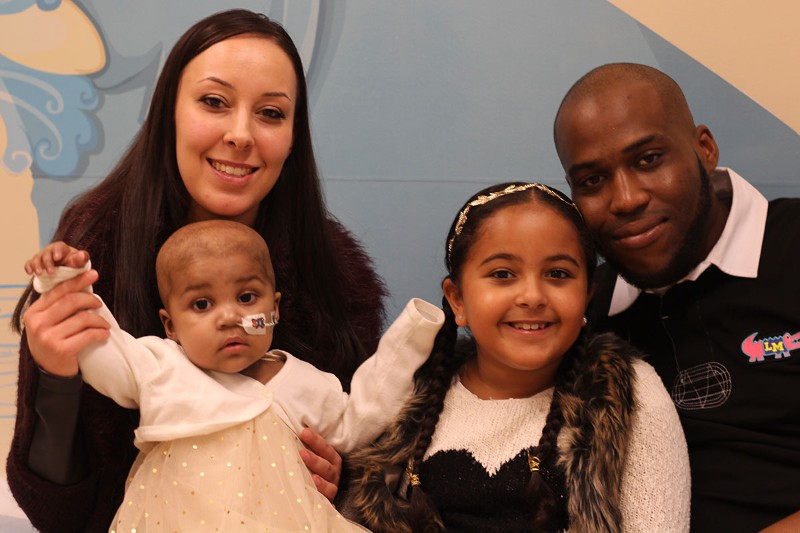
One-year-old Layla Richards was diagnosed with ALL when she was only 14 weeks old. After months of conventional treatments failed to cure the cancer, doctors told Layla’s parents that there was nothing else they could do and offered palliative care. Not willing to give up, the infant’s parents asked the doctors to try anything to save their little girl.
Coincidentally, a team of researchers from GOSH and UCL Institute of Child Health’s (ICH) were working on an experimental gene therapy technique that could be used to treat the aggressive form of cancer that Layla had. The technique had only been tested on laboratory mice, but that didn’t deter the Richards from pursuing the treatment. “It was scary to think that the treatment had never been used in a human before but even with the risks, there was no doubt that we wanted to try the treatment. She was sick and in lots of pain so we had to do something,” said Layla’s father Ashleigh.
After receiving approval from the hospital’s ethical committee, Layla was give a single 1ml infusion of genetically modified UCART19 cells. UCART19 are basically T-cells harvested from the immune system of healthy patients that are programmed to attack leukemia cancer cells. Unlike a similar approach that uses T-cells from the cancer patient, the technique developed by GOSH and biotech company Cellectis uses cells from healthy donors and modifies them so they can be given to a wide variety of patients. This was a life-saving difference for Layla who was so sick and so small that she didn’t have enough T-cells to harvest for any immunotherapeutic treatment.
RELATED: The next generation of bandages will detect infections, release medicine, and more
The gene editing of the UCART19 cells differs greatly from conventional gene therapy, which adds genes to the DNA of cells as part of the treatment. In gene editing, scientists use specialized molecular scissors known as TALEN proteins to cut into the DNA and introduce a mutation that turns off a gene. Using this technique, the team disabled a gene in the T-cells that marks them as being foreign. This modification allows the doctors to inject the cells into a patient without worrying about rejection by the recipient’s immune system. They also made a second gene-disabling edit that makes the T-cells invisible to standard leukemia medicine. This second edit is important as it lets doctors use conventional leukemia medicine alongside the gene therapy without diminishing the effectiveness of either technique.
Layla began to improve within a few weeks of receiving the UCART19 treatment. It is now several months later and Layla no longer has cancer cells in her body. Once doctors confirmed the leukemia was gone, she was given a bone marrow transplant to replace her blood and immune system which had been ravaged by her lengthy fight against the cancer. Doctors treating her aggressive cancer were “over the moon” when she improved and say her recovery is “almost a miracle.”
The researchers are cautious about calling this technique a panacea for cancer but the team is optimistic about their breakthrough. “We have only used this treatment on one very strong little girl, and we have to be cautious about claiming that this will be a suitable treatment option for all children. But, this is a landmark in the use of new gene engineering technology and the effects for this child have been staggering,” said Waseem Qasim, Professor of Cell and Gene Therapy at UCL ICH.
The team of scientists and physicians plan to improve their unconventional gene therapy technique with larger scale trials expected to begin in early 2016.





